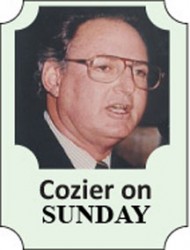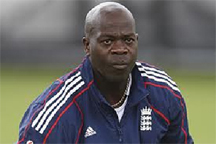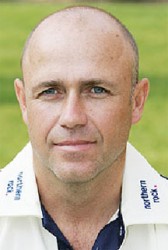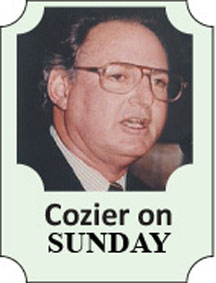WEST INDIES set out on their 500th Test at the Beausejours Stadium in St. Lucia yesterday.
It is an occasion to be celebrated; it is, as well, cause for reflection on the steady decline of the past two decades and on the recent plans to completely transform the outdated structure of the regional game.
Over the 86 years since the inaugural Test, against England at Lord’s in June, 1928, a host of great players and unforgettable matches has created a special West Indies’ legacy.
 That so many exceptional cricketers, among them the finest all-rounder the game has known, should have emerged from these miniscule territories remains one of the unlikeliest stories in international sport.
That so many exceptional cricketers, among them the finest all-rounder the game has known, should have emerged from these miniscule territories remains one of the unlikeliest stories in international sport.
It is all the more fascinating that, in spite of their political, geographical, cultural and racial differences, they should have come together, from the first, tentative venture to England in 1900 to the current series against Bangladesh, as one West Indies team.
Each emerged from British colonialism over the past 50 years to full independence, with all the trappings that go with the status. Each sings its own anthem and flies its own flag; for West Indies cricket, it is a common anthem, a common flag, a common badge.
Players of every creed and race are among the 300 to have worn the familiar colours of maroon – and, as it was for overseas Tests into the 1970s, blue. West Indies never prospered more than after the exclusivity of leadership by the white elite finally, inevitably and seamlessly gave way to a selection based strictly on merit.

Cricketing excellence has generated a shared pride among West Indians everywhere, not least those who, in the 1950s and 1960s, emigrated in their thousands to England where the team achieved some of its most celebrated victories.
At the same time, there is the harsh reality that such distinction has all but disappeared in 20 short years.
Over the first 300 Tests, the win-loss ratio was always in credit (35-33 over the first 100, 28-25 over the second, 53-13 through the third when West Indies were at their supreme best). Since then, it has been in increasing freefall (30-44 between 300 and 400, dropping to 16-53 over the past 99)*.
The reasons are innumerable and well documented.
The continual confrontation between a militant Players Association (WIPA) and a West Indies Cricket Board (WICB) short of former cricketers who could relate to the concerns of their modern counterparts led to mutual mistrust and four damaging strikes.
The chaos was compounded by the election of eight board presidents and the appointment of 11 captains, 12 coaches and seven chief executives over the period of decline.
The standard of pitches deteriorated and the first-class season remained the shortest of all Test-playing countries; the scheduling of Tests during England’s first-class season and the lack of desirable players restricted chances in county cricket that had previously been such a bonus.
More recently, franchise leagues have sprung up all over cricket’s global map, offering players enticing contracts that test their loyalty to West Indies.
Administrators, satisfied with the status quo, repeatedly rejected their own commissioned reports recommending changes to the WICB and the regional game itself.
It was clear for some time that, as then captain Darren Sammy noted after the drubbings in last year’s Tests in India and New Zealand, “we cannot continue like this”. Finally accepting the dismal reality, the WICB decided to act in an attempt to drag West Indies out of the hole near the

bottom of the International Cricket Council (ICC) ratings. It is not a moment too soon.
Ironically, it replaced Sammy as Test captain, named a new selection panel, headed by Clive Lloyd, leader of the formidable team of the 1980s, and finally parted ways with head coach Ottis Gibson.
More significantly, it is instituting the most revolutionary reforms since the Shell Shield was established in 1966 as the first annual regional tournament, with the simultaneous, and overdue, elevation of the Leeward and Windward Islands to first-class status.
It amounts to a complete reorganization.
The season, previously an inadequate one round, is to be doubled up to two, home-and-away; the first round is scheduled for November through to December with the second from February to April.

Dave Cameron, WICB president since March 2013, describes it as a fully professional system to replace the “amateur cricket” that has existed until now.
The plan is to convert the six WICB affiliated boards – Barbados, Guyana, Jamaica, Leeward Islands, Trinidad and Tobago and Windward Islands – into franchises in which the WICB would have 20 per cent share, through funding of enhanced contracts for players and support staff; the franchises would be responsible for travel, accommodation and the like.
Each would name a nucleus of 10 locals with the chance to draft in five others from a pool of regional players. Cameron foresees the expansion of the format by next season so that there would be complete free movement between the teams, as was the case over the two seasons of the Caribbean Premier League (CPL).
Even now, he talks of players making “a minimum of US $30,000” annually.
The directors originally approved the recommendations in the report of director of cricket, Richard Pybus, last March. The trick now is for Cameron is to make sure that those on his board, already known to be reluctant to change, don’t have second thoughts.
They simply can’t afford, to use Sammy’s expression, “to continue like this”.
Note: Details fromESPNcricinfo, S Rajesh, stats editor.






